The aftermath of World War II marked a significant shift in the British automobile industry. In 1952, two prominent British car manufacturers, Austin and Morris, merged to form the British Motor Corporation (BMC). This newly formed company, often compared to General Motors in its business approach, manufactured a variety of vehicles under different marques, catering to a broad customer base.
Despite its reputation as a mass-market manufacturer, BMC formed an unlikely partnership with the prestigious Rolls-Royce. At a time when British class consciousness was strong, the collaboration between these two vastly different companies resulted in the birth of a unique luxury vehicle. The product of this union was the Vanden Plas Princess 4-Litre R, introduced in 1964. Though the car combined elements from both parent companies, it struggled to find success and was discontinued by 1968.
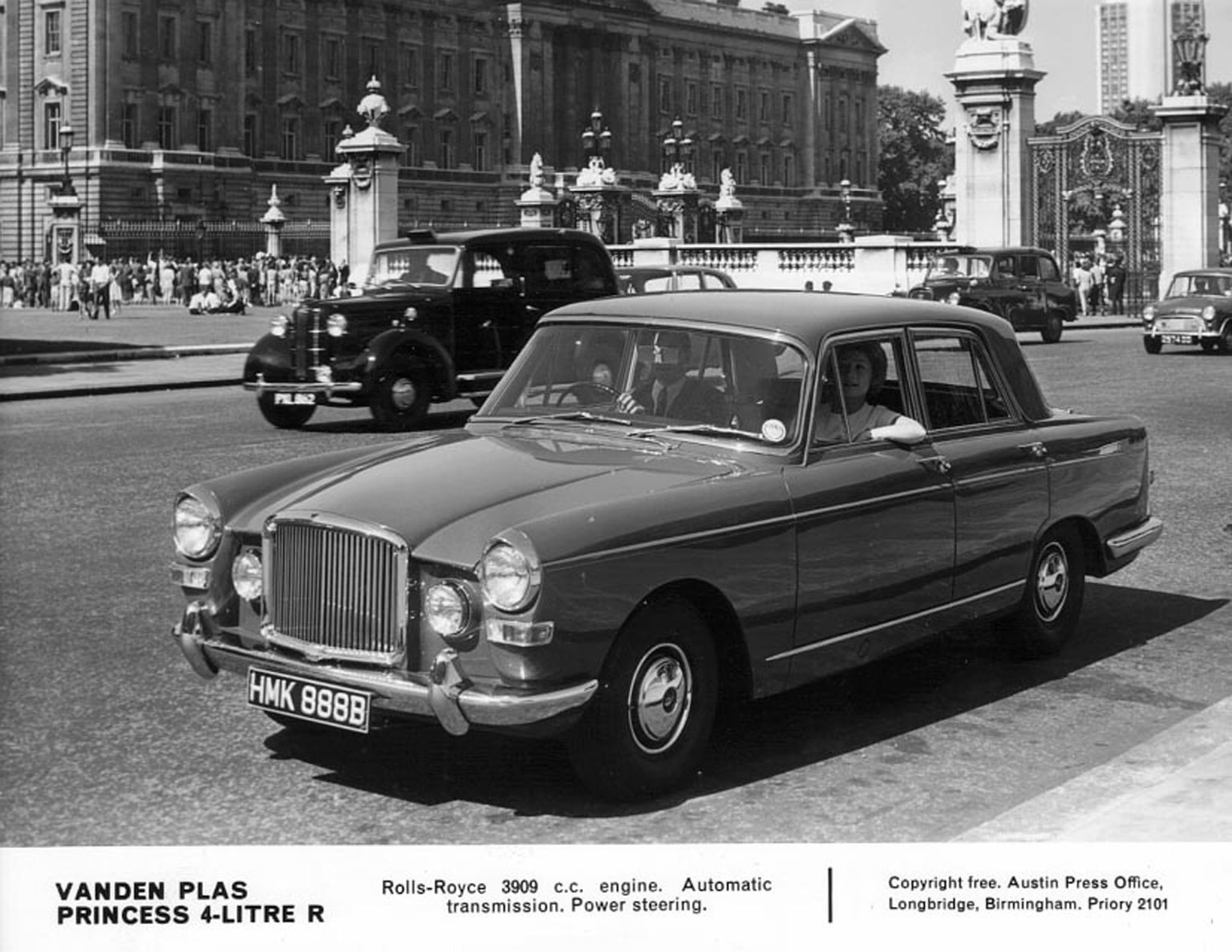
The Origin of the Princess 4-Litre R
The development of the Princess 4-Litre R can be traced back to another unexpected alliance—this time between BMC and the Italian design house Pininfarina. In the late 1950s, Pininfarina was tasked with restyling much of BMC’s model lineup, leading to the creation of the ADO 10 platform. This platform formed the basis for several vehicles, including the Austin A99 Westminster, the Wolseley 6/99, and the Vanden Plas 3.0-Litre Princess, all of which debuted in 1959 and 1960.
All of these models were powered by BMC’s C-series 3.0-liter OHV inline-six engine. In 1961, the platform received an update, increasing the wheelbase and overall size. The result was a more spacious vehicle measuring 15 feet, 8 inches in length and 5 feet, 8.5 inches in width. It was this revised version that served as the foundation for the flagship Vanden Plas 4-Litre R, which came with a significantly higher price tag—£1,994, equivalent to nearly $45,000 in today’s money.

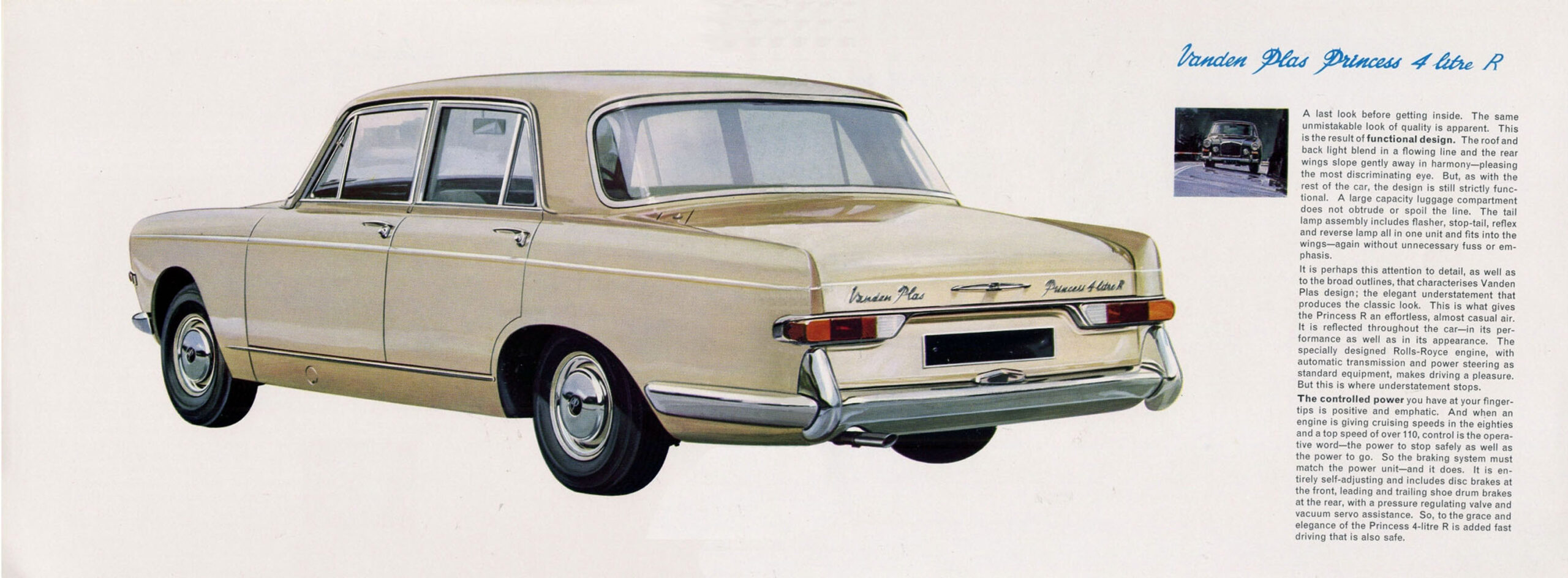
Design and Differences from Previous Models
To distinguish the 4-Litre R from its platform siblings, several notable design changes were made. The tailfins that adorned other BMC Farina-styled cars were removed, and the rear fenders were given a softer, more rounded appearance. A new roofline was introduced to increase headroom, and the front horn grilles from the 3.0-liter model were replaced with fog lamps. However, the large radiator grille, surrounded by thick chrome plating, remained. Horizontal taillamps replaced the previous vertical ones, giving the vehicle a somewhat Mercedes-like aesthetic.
Vanden Plas had a long history as a luxury coachbuilder before becoming a subsidiary of Austin in 1946. While the Vanden Plas badge was sometimes used to denote high-end Austin models, the company occasionally operated as a separate marque, with a dedicated factory in Kingsbury. This heritage was evident in the interior of the 4-Litre R, which was crafted with exceptional attention to detail.
Inside the car, the dashboard and door trims were made from genuine burled walnut, and the upholstery was high-quality matched leather rather than synthetic materials. Plush carpeting and heavily chromed switchgear added to the opulent feel, reinforcing the vehicle’s premium status.
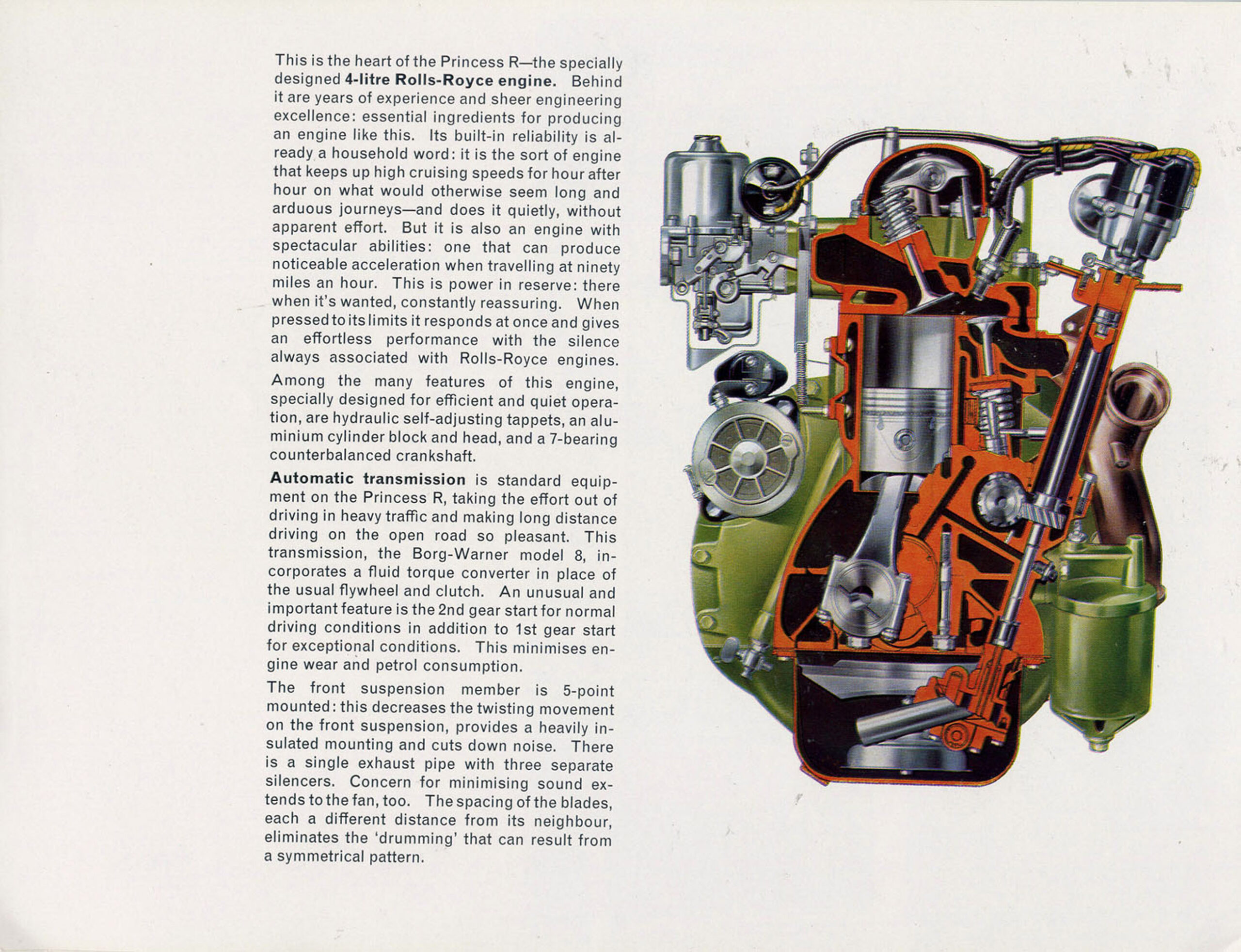
Rolls-Royce Power
Despite its luxury aspirations, the 4-Litre R shared much of its mechanical underpinnings with the ADO 10 models. The body structure remained unitized, and the suspension system—independent in the front with a live rear axle—was unchanged, save for a few refinements. The rear leaf springs were lengthened and softened to improve ride comfort, while the front coil springs were lowered by nearly an inch. Some reports suggest that the body shell was stiffened for additional torsional rigidity, and extra soundproofing was added.
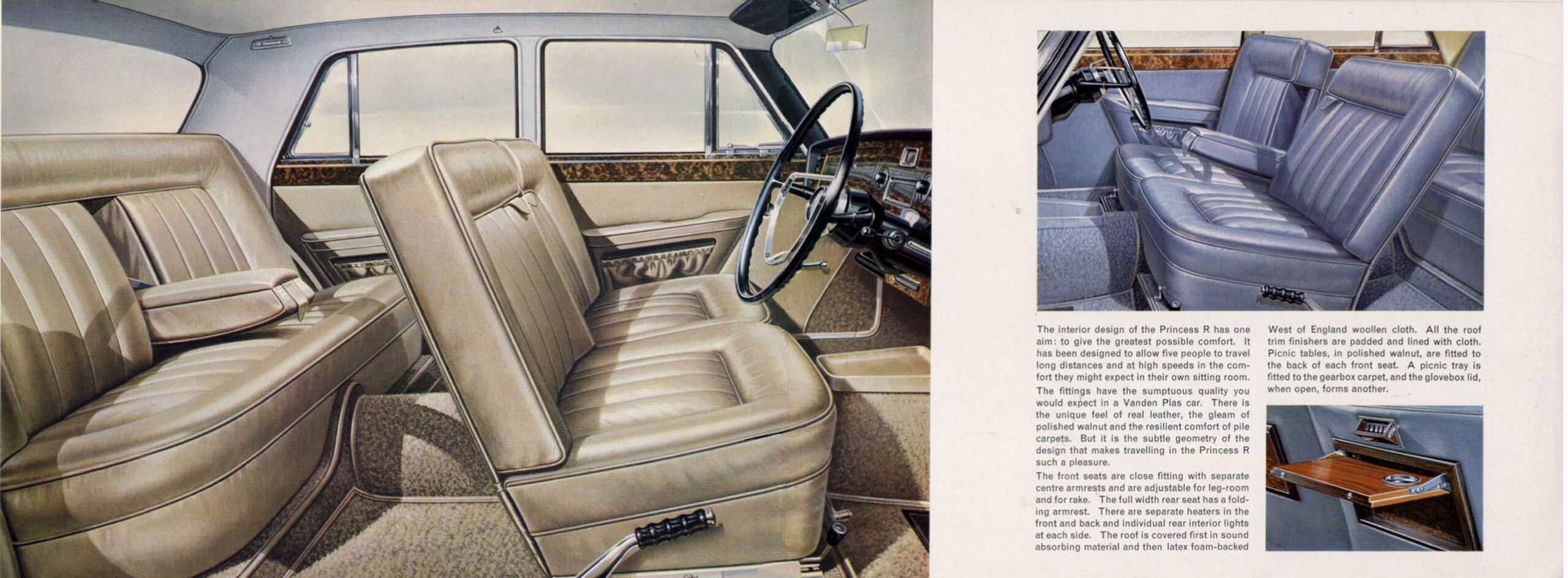
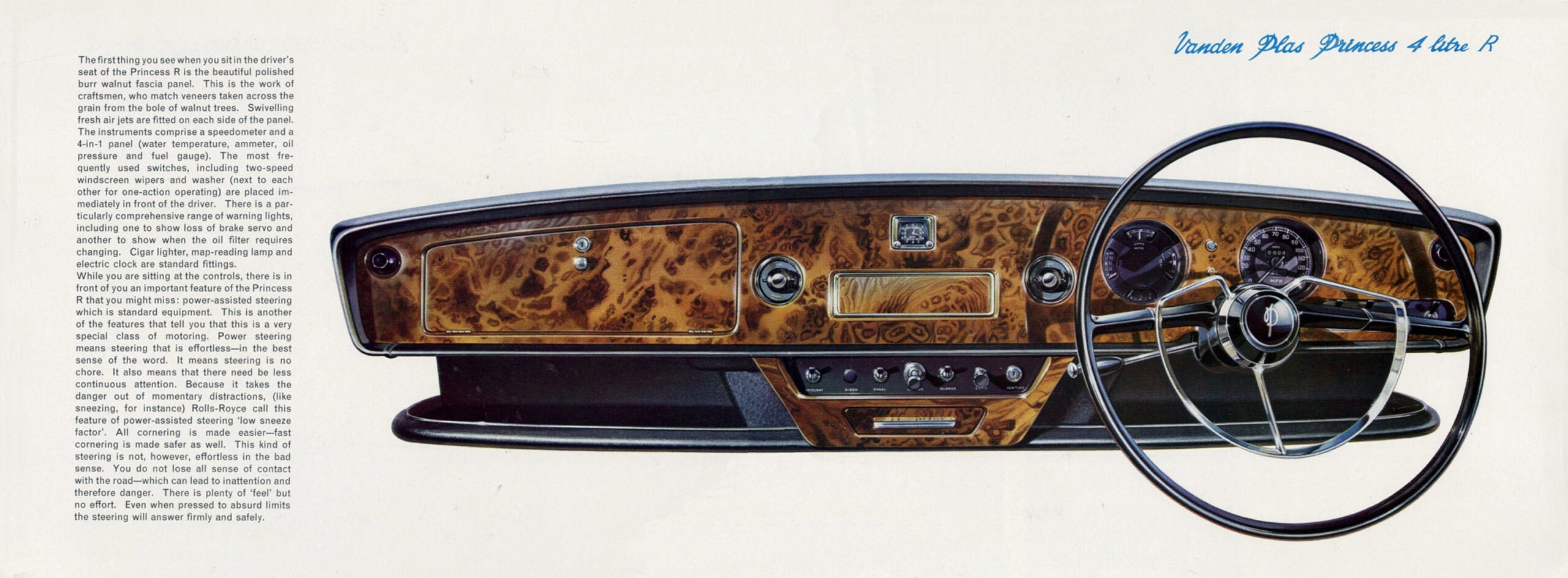
The most significant mechanical difference was under the hood. The Princess 4-Litre R was powered by a Rolls-Royce-designed FB60 inline-six engine, a lightweight aluminum unit with an inlet-over-exhaust (F-head) valve configuration. This engine had a displacement of 3,909cc and produced 175 horsepower. Unlike many British engines of the time, which favored a long-stroke design, the FB60 was oversquare, with a bore of 95.2mm and a stroke of 91.4mm. This design contributed to its smooth operation, and contemporary reviews praised the engine’s refinement. In fact, Autocar magazine described it as running “as smoothly as a dynamo.”
Performance-wise, the Princess 4-Litre R was capable for its time. It could reach 100 mph in 45 seconds, with a top speed of 109 mph—only slightly faster than its predecessor, the 3.0-Litre Princess. The modest performance gains were largely offset by the car’s aerodynamics, which were not particularly optimized for speed.
Commercial Failure and Reasons for It
Despite its high aspirations, the Princess 4-Litre R failed to achieve commercial success. In retrospect, several factors contributed to its downfall.
1. Stiff Competition
BMC was not the only British manufacturer producing luxury sedans. Humber, Jaguar, and Rover all offered compelling alternatives within the same price range. Jaguar, which became part of BMC in 1966, was particularly strong in this segment, offering a range of refined and powerful six-cylinder saloons that overshadowed the Princess.
2. Branding Confusion
BMC’s strategy for positioning the Vanden Plas name was muddled. The corporation already controlled Wolseley and Riley, two brands associated with premium vehicles, and the existence of multiple large Princess models further complicated the lineup. This lack of clear differentiation made it difficult for potential buyers to understand where the 4-Litre R fit within the broader market.
3. Negative Perception
The British class system played a role in the 4-Litre R’s struggles. Unlike true Rolls-Royces, which were symbols of wealth and prestige, the Princess was seen as a “poor man’s Rolls-Royce.” This perception diminished its appeal among affluent buyers, who preferred to invest in more prestigious brands like Jaguar or Rover.
4. Weak Overseas Sales
Efforts to sell the car in the United States and other international markets were largely unsuccessful. American buyers who wanted a luxurious British six-cylinder sedan overwhelmingly chose Jaguar, which had already established a strong presence in the market. Additionally, the Rolls-Royce badge on the engine cover was not enough to entice buyers away from more established luxury brands.
Legacy and Fate of the Model
With only 6,555 units produced, the Vanden Plas Princess 4-Litre R remains a rare piece of British automotive history. Though it never became a major success, the model does have a few claims to fame. Most notably, Queen Elizabeth II owned a custom-built estate version of the car, manufactured by Radford.
Today, surviving examples of the Princess 4-Litre R are scarce, and their exact numbers are unknown. While it may not have been a game-changer in the British luxury car market, the 4-Litre R remains an interesting relic from an era when BMC attempted to blend mass-market production with aristocratic aspirations.
In the end, the Princess 4-Litre R serves as both a testament to British automotive ingenuity and a cautionary tale about the challenges of brand positioning and market perception. Its story is one of ambition, innovation, and ultimately, unrealized potential.
